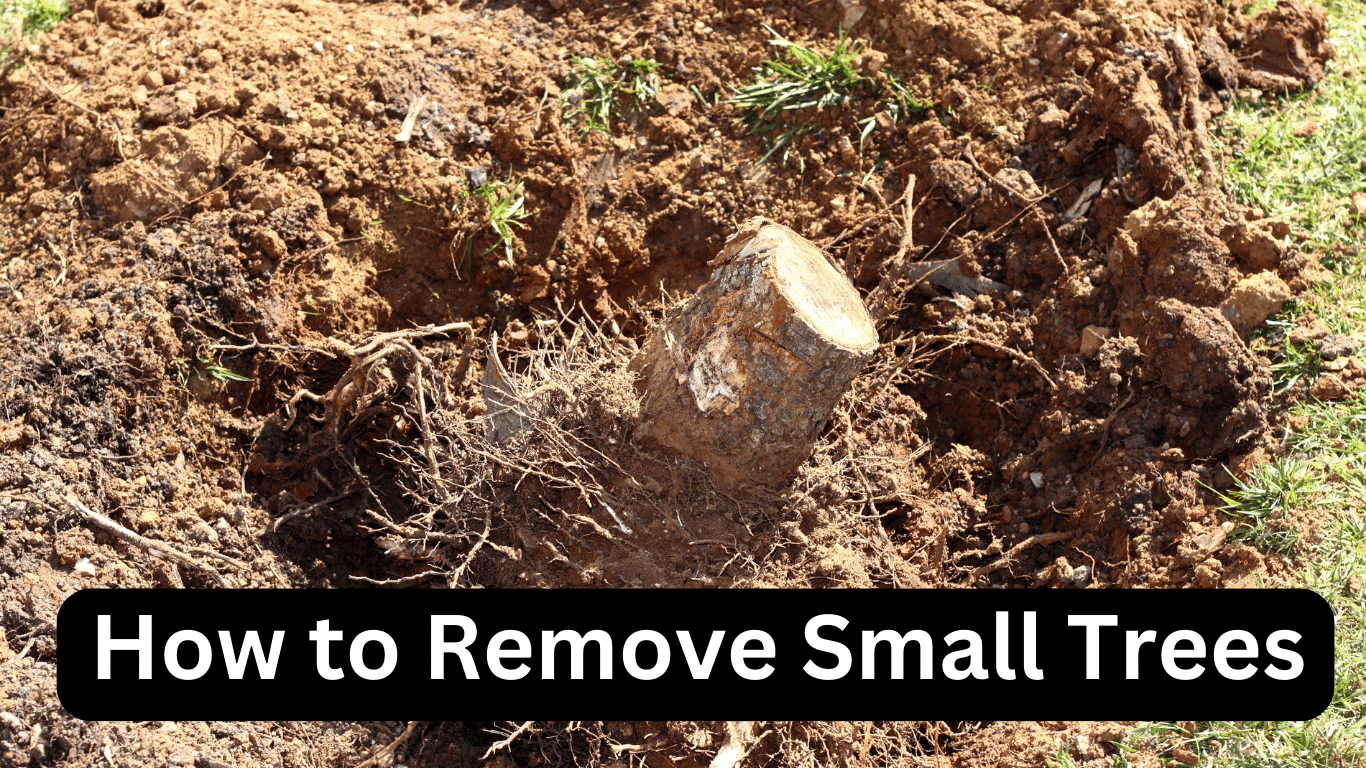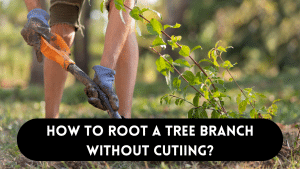Removing small trees from your property can be essential for maintaining a neat and safe outdoor space. Knowing the correct methods for small tree removal is crucial, whether you want to make room for new landscaping or prevent potential hazards. This guide walks you through the process step-by-step, ensuring you can tackle this task safely and effectively.
Methods to Remove Small Trees
I. Using an Axe or Chainsaw
If you have small trees with relatively thin trunks, using an axe or chainsaw can be a straightforward and efficient way to remove them. However, before you begin, ensuring you have the right tool for the job is vital. An axe works best for trees with slender trunks, while a chainsaw is more suitable for thicker ones.
Safety should always be a top priority when using such tools. Wear protective gear, such as gloves, goggles, and ear protection. Follow these steps to remove small trees with an axe or chainsaw:
Positioning: Stand on the side of the tree where you want it to fall. Make sure there are no obstacles in that direction.
Notching: With the axe or chainsaw, create a notch on the side of the tree facing the direction you want it to fall. The gap should be at a 70-degree angle to guide the tree’s fall.
Felling: Begin cutting from the opposite side of the notch until the tree starts to fall. Step away to a safe distance once the tree begins to come down.
II. Digging Up the Tree
For smaller trees with shallow roots, digging up the tree can be effective. This approach is beneficial if you wish to transplant the tree or prevent regrowth. Follow these steps for successful tree removal:
Trimming: Start by removing all the branches and root suckers from the tree using shears or a saw. This will make the tree more manageable to work with during the removal process.
Cutting the Trunk: Once the tree is trimmed, cut the trunk down to about 1 inch (2.5 cm) above the ground. This will provide a clean surface for digging around the roots.
Digging: Use a shovel or pickaxe to carefully dig around the tree’s roots. Be patient and dig deep enough to access the central root system.
Removing the Roots: Once the roots are exposed, gently pull and wiggle them free from the soil. Work your way around the tree until all the bases are detached.
III. Making an Angled Cut
If you’re using a saw to remove a small tree, making an angled cut is essential to ensure the tree falls in the right direction. This method is beneficial when there are obstacles nearby. Follow these steps for a precise angled cut:
Assessing the Falling Direction: Determine the direction you want the tree to fall. Choose an approach that avoids nearby structures or hazards.
Making the Cut: Use the saw to create an angled cut on the side of the tree facing your desired falling direction. A 70-degree angle is ideal for guiding the tree’s descent.
IV. Removing Smaller Limbs
Before cutting down the tree, take the time to remove any smaller limbs that may be in the way. This will make the tree removal process smoother and prevent damage to surrounding structures. Use pruning shears or a saw to remove smaller limbs and branches safely.
V. Planning and Preparation
Before you embark on removing a small tree, proper planning and preparation are crucial for safety. Follow these steps to ensure a successful and safe tree removal:
Determine the Falling Direction: Assess the tree’s position and surroundings to determine the best direction for the tree to fall.
Create Escape Routes: Establish two escape routes on either side of the falling direction. This will provide you and others with safe pathways to move away from the tree once it starts falling.
Frequently Asked Questions
What are some safety precautions when removing small trees?
Safety is of utmost importance when removing small trees. Follow these precautions to ensure a secure tree removal process:
Protective Gear: Wear appropriate protective gear, including gloves, safety goggles, and ear protection. Long sleeves and pants can also protect you from scratches and debris.
Inspect the Tree: Before starting, examine the tree for any signs of damage or instability. If the tree appears unhealthy or compromised, seek professional assistance.
Clear the Area: Remove any obstacles and clear the area around the tree. Ensure no people, pets, or structures are within the falling zone.
Use Proper Tools: Select the right tools for the job, such as an axe, chainsaw, or pruning shears. Ensure they are in good condition and suited for cutting trees.
Cut Safely: If using an axe or chainsaw, practice proper cutting techniques and stand opposite the falling direction.
Plan Escape Routes: Determine the tree’s falling direction and create two escape routes on either side. This allows for a quick and safe exit once the tree starts to fall.
Beware of Tension: Be cautious of tension in the tree, which can cause it to kick back or move unpredictably during cutting.
Ask for Help: If the tree is large or challenging to remove, consider seeking assistance from a professional tree removal service.
How to dispose of small trees after removal?
After removing small trees, you have several options for disposal:
Mulching: If you have a wood chipper or access to one, you can turn the tree into mulch, which is beneficial for garden beds and landscaping.
Composting: Smaller branches and leaves can be composted, breaking down into nutrient-rich soil for your garden.
Curbside Pickup: Check with your local waste management service to see if they offer curbside pickup for yard waste, including small trees.
Drop-Off Centers: Many communities have designated drop-off centres for yard waste disposal.
Reuse: Use the wood for DIY projects or as firewood if suitable for burning.
Recycling Centers: Some recycling centres accept woody debris for processing.
Remember to adhere to local regulations and guidelines for tree disposal.
What are some alternative methods to remove small trees?
If you prefer alternatives to cutting down small trees, consider these methods:
Chemical Removal: Use herbicides designed explicitly for tree removal to weaken and kill the tree gradually.
Girdling: Create a deep cut through the bark around the tree’s trunk. This disrupts the tree’s flow of nutrients and causes it to die over time.
Pulling or Levering: Use a winch or lever to uproot the small tree, particularly when dealing with shallow-rooted species.
Burning: In some cases, controlled burning can remove small trees and their stumps.
Always exercise caution and research the effectiveness and safety of these alternative methods before attempting them.
How do you get rid of little trees?
To get rid of little trees effectively, follow these steps:
Trimming: Remove all branches and root suckers from the tree using shears or a saw.
Cutting: Use a saw to cut the trunk to about 1 inch (2.5 cm) above the ground.
Digging: Dig around the exposed roots and remove them from the ground with a shovel or pickaxe.
Disposal: Choose one of the disposal methods mentioned in the previous FAQ to dispose of the tree after removal.
How do you remove small tree roots?
To remove small tree roots, proceed as follows:
Expose the Roots: Clear the area around the tree’s base and remove any soil or debris covering the roots.
Loosen the Soil: Use a shovel or pickaxe to loosen the soil around the roots.
Gently Pull and Cut: Grasp the roots firmly and pull them gently to detach them from the soil. Use a pruning saw to cut them before removing them for larger bases.
Backfill the Hole: After removing the roots, fill the hole with soil and pack it down to ensure stability.
Remember that more extensive root systems may require professional assistance for safe and effective removal.
Conclusion:
Removing small trees from your property can be a manageable task. You can safely and effectively remove small trees by using the right tools and following our step-by-step guide. Always prioritize safety and wear appropriate protective gear when using tools like an axe or chainsaw. Additionally, take the time to plan and prepare, ensuring a smooth and hazard-free tree removal process. With these methods at your disposal, you can maintain a tidy and safe outdoor space that enhances the beauty of your property.




